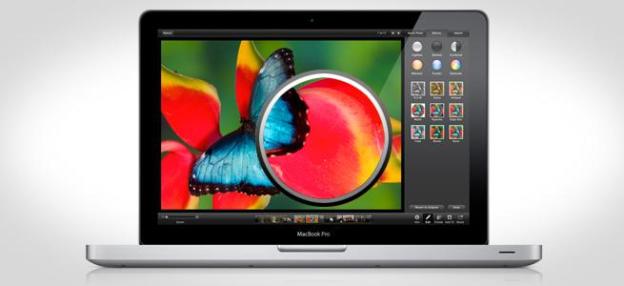
Hot on the heals of one set of Mac rumors, we get another. This time, however, the news is a bit of a let down. A poster in the forum of Chinese website WeiPhone.com has published what he or she claims is a hardware spec list for a new 13-inch MacBook Pro, sent over by a “friend” who works at Apple in the United States. Absent from the list: a high-resolution Retina display, similar to that found on the iPhone 4/4S and the third-generation iPad.
Previous rumors have the new MacBook Pro set to receive the “Resolutionary” Retina magic when Apple unveils its new line of laptops and desktops, which is expected to happen during next week’s Worldwide Developer Conference in San Francisco.

New MacBook Pro, no Retina (allegedly)
The image, which at the very least mimics the style and type of data found on a Apple laptop box, claims that the new 13.3-inch MacBook Pro will have a display resolution of 1200 x 800 — identical to that found on the current version of the same laptop. Further, the image shows that the portable PC will pack a 2.5 GHz dual-core Intel Core i5 processor with 3MB shared L3 cache — a negligible upgrade from the 2.4 GHz processor offered in the lower end 13-inch MacBook Pro that’s currently available.
Other specs include 4GB of 1600MHz DDR3 SDRAM, 500GB 5400-rpm hard drive, the new Intel HD Graphics 4000, and an 8x slot-loading SuperDrive. Thunderbolt ports are there, as well (no surprise), and the two USB 2.0 ports on the current MacBook Pro are upgraded to USB 3.0, which is anything but a shocker.
The physical proportions in the purported spec sheet show that the new 13-inch MacBook Pro will measure 12.78 x 8.94 x 0.95 (inches), and weigh 4.5 pounds — again matching the current version exactly. Earlier rumors showed a merging of the MacBook Pro and MacBook Air lines, with the new MacBook Pros receiving a thinner body design.
Of course, even if this alleged spec list is 100 percent accurate, the specs are clearly for the lower-end 13-inch MacBook Pro, which means some of its more expensive brothers could receive the Retina upgrade, and a slimmer profile. But for now, we’ll just have to add this to our growing list of maybe-maybe-nots.
Editors' Recommendations
- The XPS 16 is fighting an uphill battle against the MacBook Pro
- Best Buy’s deal of the day is $150 off the MacBook Air M2
- The 5 best MacBooks for video editing in 2024
- MacBook Pro 16 vs. MacBook Pro 14: The important differences
- The best MacBook to buy in 2024



